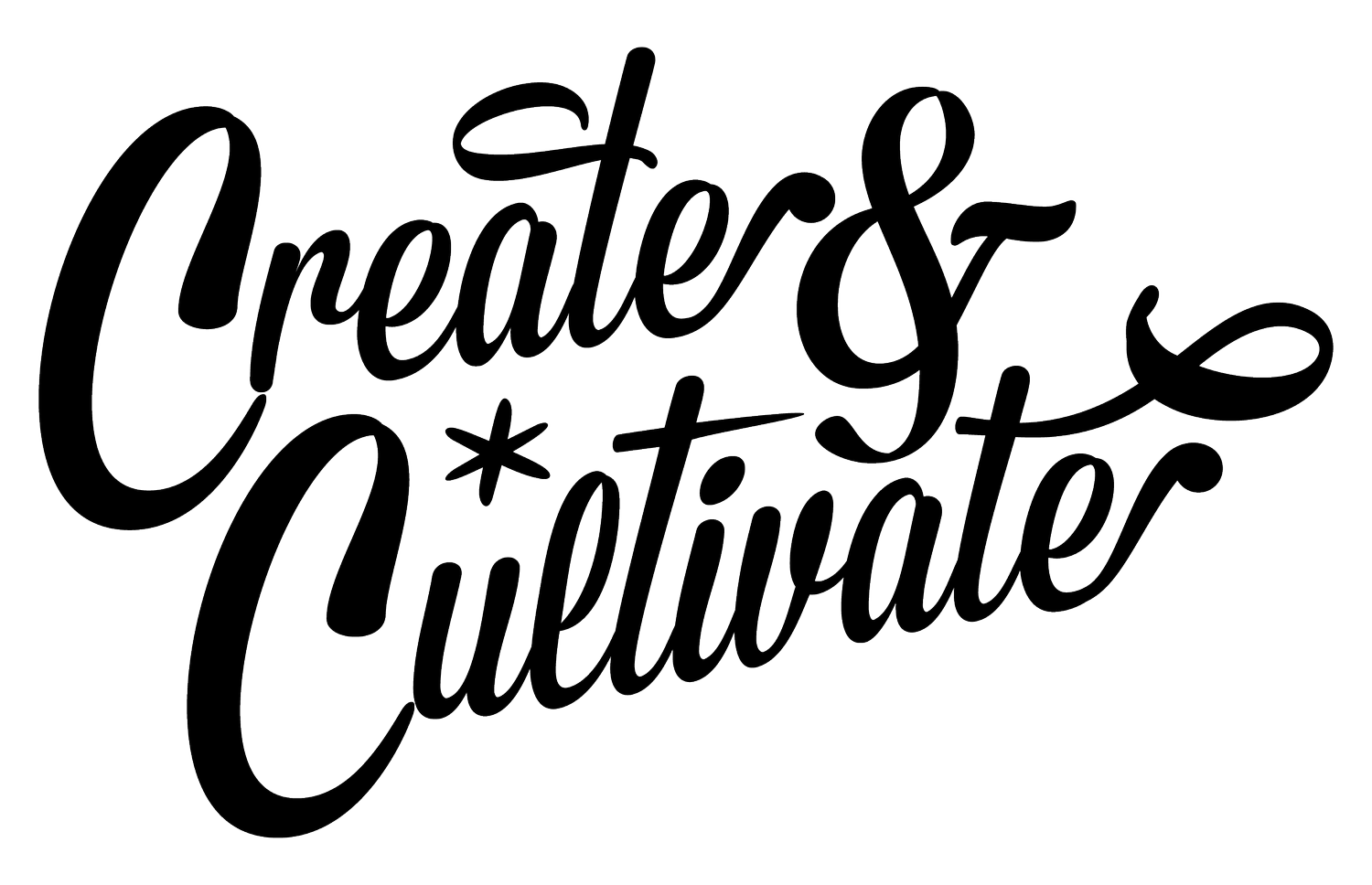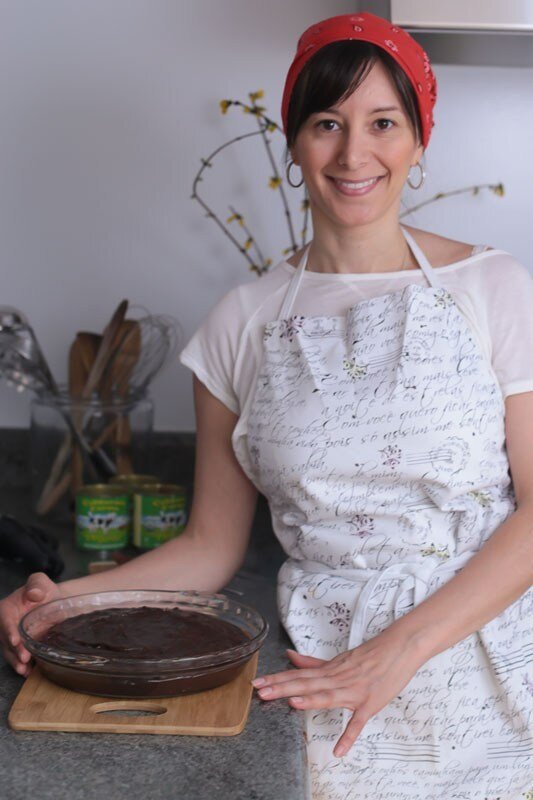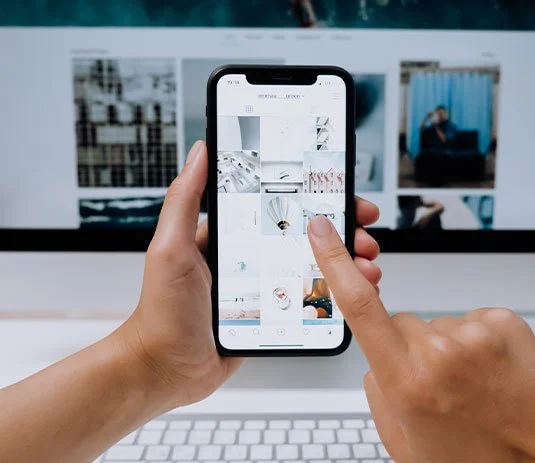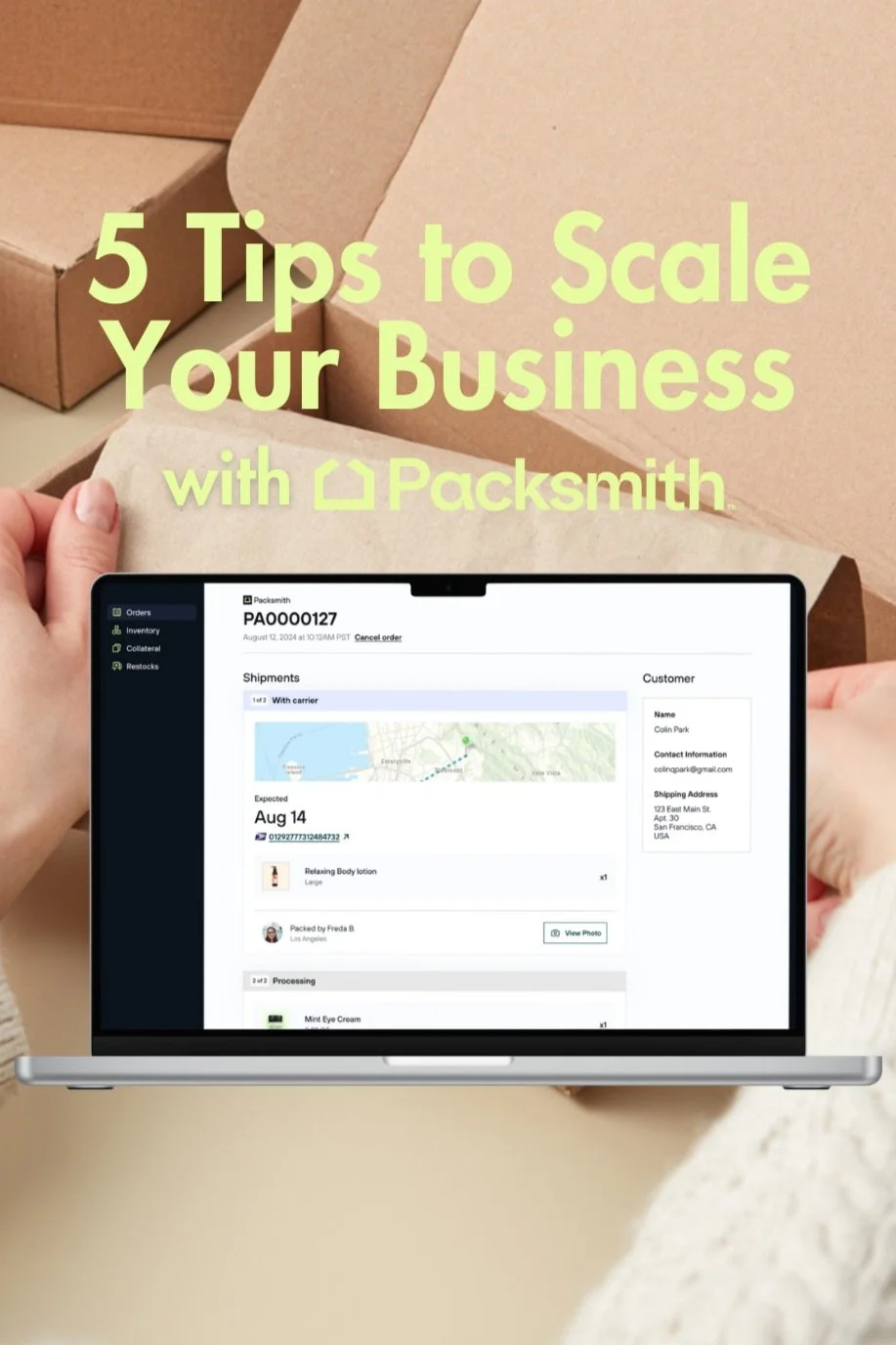This post is in paid partnership with Mastercard.
Starting a small business takes a lot of grit and a big dose of hustle to succeed but just because it’s hard doesn’t mean you shouldn’t do it. There are so many founders who have proven that—they took their fear and turned it into fuel. But while the passion is never lacking, there’s one crucial part of the business that is often overlooked—the financials. As a creative, it can be challenging to think about money but without it, your dream will never turn into a profitable company.
That’s where mentorship comes in. Having someone with experience to guide your decisions, especially around money, can be incredibly impactful. “Small business owners wear many hats, often trying to navigate and learn the different roles of running a business along the way,” says Ginger Siegel, the North America Small Business Lead at Mastercard. “Mentorship is a critical component of entrepreneurship, especially when considering 70% of mentored small businesses survive past the five-year mark. At Mastercard, we’re committed to providing small businesses with the resources and expert guidance they need to take their business to the next level.”
To find out how you can balance creativity with business, we interview five small business owners from the Mastercard marketplace at our San Francisco conference and ask them to share their biggest money lessons and the one priceless tip that took it to the next level.
Renee Tam
CEO, KIM+ONO
Watching her parents develop and run their storefronts in San Francisco’s Chinatown, Tam learned everything from merchandising to operations to product development. So, you could say entrepreneurship was in her blood. So, in 2004 Tam took the family business online and ran it out of their apartment on evenings and weekends, offering only the stores’ best-selling items.
The brand quickly grew and she expanded to a small team of four with a focus on creating handcrafted kimono robes. In 2016, Renee joined forces with her sister Tiffany, who had the vision to rebrand the online shop and to open a brick and mortar store to bring the brand to life. This modern take on tradition has officially put KIM+ONO on the fashion map and we can’t get enough.
C&C: Where do you think is the most important area for a business owner to focus their financial energy?
Renee Tam: “It’s so important to have an intimate relationship with your balance sheets. If you are routinely reviewing your balance sheets and ROA (Return on Assets), you are going to be on top of any issues right away. Having a deep understanding of your financial status sets you up to make the best decisions for your business to grow and thrive, no matter how big or small you may be.”
What was your first big expense as a business owner?
“Our amazing accountant and she was well worth it!”
How did you decide what to pay yourself? How did you decide what to pay employees?
“Behind every successful company is an amazing team. When we started out, my priority was to make sure my team was well compensated before anything else (within our budget, of course). As for myself, I started my payroll at a bare minimum (less than our employees’ pay rates) so we could allocate funds to grow our company’s potential and impact.”
What are your top three largest expenses every month?
“Payroll, marketing, and rent.”
What apps or software are you using for finances? How did you decide when to hire a financial advisor (if you have one)?
“I use Quickbooks and Avalara. The best financial advisement I can get is from my sister and business partner, Tiffany, my husband, and my accountant. They’re the three smartest money people I know, and they always have our company’s best interest at heart.”
Do you wish you’d done anything differently in your financial journey as a business owner?
“I wish I spent more on outsourcing to specialists earlier. In the beginning, to save money, we ran all parts of the business between me and two other employees. We were working against a learning curve because we weren’t specialists in the fields we were covering (i.e., social media management, design, marketing), we were growing at a much smaller rate.”
What was the biggest money lesson you learned since starting KIM+ONO?
“It’s so important to have a safety net, whether it’s extra savings or a business LOC. There are so many unforeseen opportunities that will come up. Knowing you have a way to cover expenses that pop up means you’ll be ready to jump right into opportunities when they come your way.”
What's the priceless financial tip that transformed your small business?
“Hire an amazing team to support you. With an all-star team, your company will grow much faster.”
Kelsea Olivia
Founder, CEO, and Creative Director, East Olivia
If you’ve been to any of our events, then you’ve experienced the beauty that is East Olivia. They are the most inventive, women-led creative agency and we’re incredibly proud to partner with their team and it’s founder, CEO, and creative director, Kelsea Olivia. Despite being founded in New York City, the team now operates all over the U.S. and abroad specializing in creative production and event styling. Their elevated florals and installations are breathtaking and we continue to be blown away by their creations every single time.
C&C: Where do you think is the most important area for a business owner to focus their financial energy?
KELSEA OLIVIA: “I think it’s most important to have a realistic understanding of what role the finances you need play into your business so that you are able to execute your work/product/mission with excellence. This will be unique to each founder/owner based on the specific needs of your business. I know that for East Olivia, at our current stage it is most important that our team focuses our financial energy on the clarity of profitability of our projects so that we can strategically choose the clients and projects that are the best possible fit for us.”
What was your first big expense as a business owner?
“Proper tools, materials, and cost of manpower. EO operates largely on an amazing base of freelance employees. In addition, to give context to that cost—we are based in NYC which means that everything is more expensive—especially our main material (flowers) and support (people).”
How did you decide what to pay yourself?
“I decided to not pay myself for quite some time. I was committed to keeping my full-time job and growing my business on the side so that I could sustain being very specific about the types of projects I took on vs. reactive to what clients were asking for. While this was challenging, it made our company healthier and less reliant on saying ‘yes to everything’ from the beginning (though I still said ‘yes’ so very much!).
“By the time we got around to assigning myself a salary I really looked at what I felt I needed to make in order to cover my living costs at a level that would allow me to not be stressed by personal financial needs. But I was also very conservative as currently, I am committed to taking every dime we make and reinvesting it back into the company.”
How did you decide what to pay employees?
“A combination of market research for those positions plus costs of living needs here in NYC and additional support from my kick-ass business coach (Gretchen Jones) on what were appropriate salaries for my staff. I also took into account what perks/other value comes from working at East Olivia. This includes things like Health Insurance etc that are added values on top of one’s salary.”
What are your top three largest expenses every month?
“Overheads (full-time staff, rent, health insurance etc.), materials (flowers, flowers, and more flowers!), and freelance labor.”
What apps or software are you using for finances?
“Xero, Bill.com, Hubdoc, Gusto. We have no specific financial advisor right at this moment but we work closely with my business coach, the MC Small Biz council and other trusted mentors/advisors.”
Do you wish you’d done anything differently in your financial journey as a business owner?
“YES! Asked for more help earlier on. The main challenge is that we do not know what we don’t know… ya know! Therefore, finding a mentor or advisor early on who can support you in understanding what the basics are is something I would highly recommend to any business owner. I have slowly but surely been putting more of these support systems in place and it is making all the difference in the financial health of the company.”
What's the priceless financial tip that transformed your small business?
“The tip that truly transformed our business was my floral design mentor, empowering myself, and our team on how to be confident about our pricing for our work. I had hoped there was a magic formula or shortcut for us to figure out our pricing in a quick turnkey way but what Amy taught me was that the only way to gain true confidence in our pricing was to know why we are charging and what we are charging so that we can confidently communicate that to our clients.”
Sherry Lee
Founder, Esselle SF
It was during the planning of her own wedding that Sherry Lee had the lightbulb moment for her company, Esselle SF. A lover of all things home décor and entertaining related, she was inspired to create a lifestyle brand that is artful, modern and design-focused. Lee hopes to bring that magic delight to all occasions, from entertaining to weddings and gifting through her designs.
C&C: Where do you think is the most important area for a business owner to focus their financial energy?
SHERRY LEE: “Marketing has helped us gain more brand exposure that helps turn leads into sales. We often collaborate with other small businesses with similar brand esthetic to cross-promote our products so that in turn helps expand our customer base.”
What was your first big expense as a business owner?
“Purchasing inventory and branded packaging materials.”
How did you decide what to pay yourself? How did you decide what to pay employees?
“When I finally decided it was time to start paying myself and not pour everything I made back into the business. I made a consistent percentage of withdrawal from every sale made. The percentage comes from pure profit of each sale after cost, labor, and overheads. It helps me prioritize my profit and better manage cash flow.
“As for my employee, I pay reasonable compensation based on a few factors; the level of responsibility, amount of time, and comparison to how other small businesses similar to mine pay their employees.”
What are your top three largest expenses every month?
“Payroll, marketing/ad, utilities (including rent).”
What apps or software are you using for finances?
“I use Quickbook Intuit. I don’t have a financial advisor at the moment.”
Do you wish you’d done anything differently in your financial journey as a business owner?
“Yes! I wish I had taken the “profit first” approach so that I can better manage cash flow earlier on.”
What was the biggest money lesson you learned since starting the company?
“Revenue does not reflect how the business is doing. You could be making more but spending way more. It’s really about having the proper cash flow to keep the business afloat.”
What's the priceless financial tip that transformed your small business?
“Profit first. By making active profit withdrawal on each sale helps me to see how much cash I can actually use towards the business. Having a better understanding of the cash flow will help you make better decisions on whether if you have the funds to create a new product, pay for a new office chair… or hire a new employee…etc.”
Claire Hudson
Founder, Oso & Me
Raised on a ranch in California, Claire Hudson spent a lot of time climbing trees. In starting her family she felt strongly that her children should be able to dress themselves, and no clothes were too nice to play in. She created Oso & Me as a wardrobe full of clothes that are beautiful, functional, and worn for all occasions.
C&C: Where do you think is the most important area for a business owner to focus their financial energy?
CLAIRE HUDON: “Salary. The people you work with are your greatest asset.'“
What was your first big expense as a business owner?
“Branding and website development.”
How did you decide what to pay yourself? How did you decide what to pay employees?
“I pay myself the same amount as our highest-paid employee. I work the same hours and have the same qualifications so it made the most sense this way. I decided to pay our employees the going rate for their field and level of expertise. I also believe strongly in letting mothers have the time that they need to be a mom as well as a woman with a career.
“I allow for all of my employees a chance to work from home bring their child to work if they don’t have childcare that day and a very flexible work schedule so they never miss a doctor’s appointment or school function.”
What are your top three largest expenses every month?
“Salary, production, and health insurance.'“
What apps or software are you using for finances?
“Gusto and QuickBooks. I decided to hire a financial advisor on the advice of my mentor.”
What was the biggest money lesson you learned since starting the company?
“Create a financial plan for one, three, and five years. Be okay with changing it.”
Renata Stoica
Founder, tinyB Chocolate
Chocolate-making has been a part of Renata Stoica’s life since she was 12-years-old. She grew up in a town called Itapeva near Sao Paolo in Brazil as the eldest of three sisters and when her mother needed help making chocolate, she chose her. Word spread throughout the town of their magical chocolate-making skills and soon their handmade chocolates became popular gifts with friends and family, along with the local chocolatiers. Now, she still makes each brigadeiro by hand here in San Francisco, California.
C&C: Where do you think is the most important area for a business owner to focus their financial energy?
RENATA STOICA: “Visibility is the number one area to focus on.”
What was your first big expense as a business owner?
“Capital equipment. We bought a chocolate mixer and an extruder that were quite expensive.”
How did you decide what to pay yourself? How did you decide what to pay employees?
“Paying employees is a matter of asking other business owners and obtaining comparables. Paying yourself is a matter of how much money there is at the end of the day.”
What are your top three largest expenses every month?
“The largest expenses are payroll, rent, and sales.”
What apps or software are you using for finances?
“We use QuickBooks to keep finances straight and bookkeepers to help manage all the information.”
Do you wish you’d done anything differently in your financial journey as a business owner?
“I would have created more visibility in our finances earlier and understood how our processes for manufacturing work and how are structure feeds into our costs.”
What was the biggest money lesson you learned since starting the company?
"The biggest lesson was that if you don't track expenses you're losing money.”
What's the priceless financial tip that transformed your small business?
“I can't think of one single financial trip tip that transformed our business. However, one thing that was surprising was that after we built out a large production facility we were able to subsidize the rent significantly by subleasing to other companies so our rent didn't actually go up even though the facility is far bigger.”
How do you stay on top of your business financials? Share your priceless money tip with us in the comments below.















